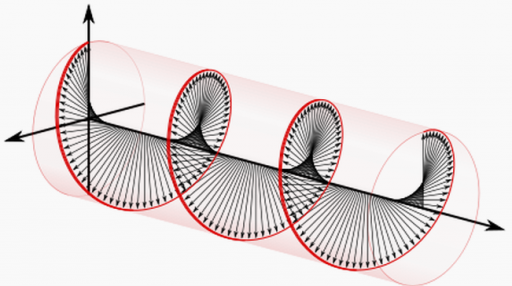Polarization imaging for super vision
February 2, 2012
Scientists at the Colorado School of Mines (CSM) and ITN Energy Systems have developed a new circular polarization filter with the potential to aid in early cancer detection, enhance vision through dust and clouds, and even improve a moviegoer’s 3D experience.
Polarization is the process by which rays of light exhibit different properties in different directions, but especially the state in which all the vibration or frequency of the light takes place in one visual plane.
When measuring the different properties of light, the human eye can, of course, see in color but it cannot differentiate between the inherently different polarizations of light emanating from an object. This new filter allows users to measure the polarization state of light quickly and efficiently.
Circular micropolarizer
“This is by far the easiest circular micropolarizer to fabricate, which lets us measure all of the properties of light using a simple camera,” notes ITN researcher Dr. Russell Hollingsworth.
To better understand this new technique, consider the modern digital camera. Color digital cameras are made possible because of the development of micro-color filters that are put directly on the charge-coupled device chip within the camera, where each “pixel” is actually 3 or 4 independent pixels that detect a different discreet color.
The same concept is employed for this new approach to polarization — also using a simple digital camera — but there is also an added benefit. Not only does this new filter distinguish colors, it also measures both linear and circular polarized light.
Photographers are familiar with polarization filters you attach in front of your camera lens to decrease glare. But being able to make micropolarizers right on top of the detector array would result in a “polarization camera” that collects information in the same way color digital cameras do.
While linear polarizer filters are easy to make, circular polarizers, up to this point, have been very difficult to fabricate, but this problem may have been solved. The CSM/ITN research team developed a micro-structure that accurately measures circularly polarized light, the key to making a true polarization camera. On top of that, the new structure can be made to filter for both color and polarization, allowing for a combination color/polarization camera that measures everything about the light.
Super vision
It is those specific light measurements that provide the unique benefits of this new technology. By measuring the polarization state of a light source, you arrive at a number of interesting applications. One significant capability would be to enhance one’s vision through dust/clouds. When light passes through dust or clouds, it typically is polarized in a certain way. A polarization camera can significantly improve the ability to “see through” these obscurants and more accurately determine one’s target, thus both improving target tracking and reducing targeting errors.
Another important application is biological detection based on chirality, wherein an object does not look the same if you rotate it 180 degrees. With certain biological materials, such as DNA, its helix structure can be used to readily image and identify its chirality characteristics to determine “friend or foe.”
Polarized light can also aid in biological detection, identifying tissue anomalies such as cervical cancer. Polarized light, which focuses its energy in one direction, can enable physicians to better see beneath the surface of the cervix for signs of trouble.
The filter development was funded by the U.S. Air Force Office of Scientific Research (AFOSR).
